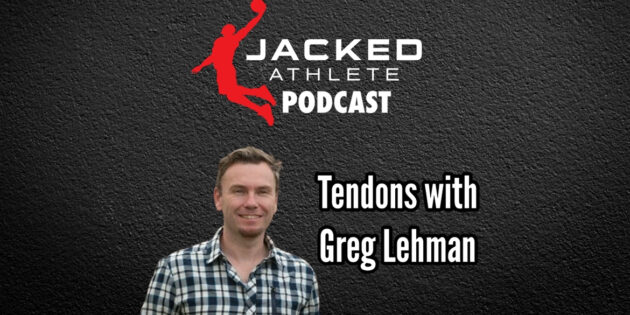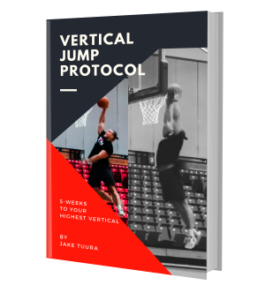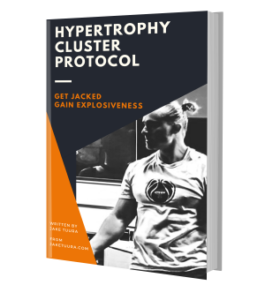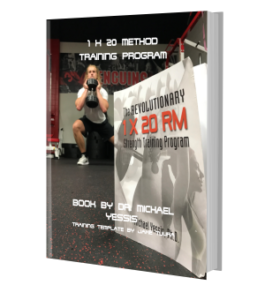https://podcasts.apple.com/us/podcast/jacked-athlete-podcast/id1462537296?i=1000695065247
Diagnosis: “I just realized none of the findings of the testing really changed anything. The treatment was always the same, no matter what you found. And that was an early realization in my career. And then I’ve just doubled down on it where for the vast majority of things, unless you’re a surgeon or maybe unless you do injections, the diagnosis really doesn’t tell you what to do.”
“If you’re in like the multiverse with a 24 year old woman or say 38 years old and she, she plays the same sport, volleyball or whatever it happens to be. And she has kneecap pain, IT band pain, patellar tendinopathy, maybe a meniscal strain, early knee OA. None of those things would change what you do in rehab. It’s sort of her and and the sport that tells you what to do… You just build people up to do what they love.”
“A bone injury. That’s actually one of the few areas where maybe knowing the tissue kind of matters. Because with a bone stress injury, you probably have to back off and let it heal. And what sucks is initially it’s just time.”
“What people might say is maybe that tendon needs to get stiffer… is the lack of stiffness, which is just a manifestation of how strong the tendon is. Yeah. Is that lack of tissue strength, something that’s inhibiting someone from getting back to their sport? So that’s like a very specific physical attribute and an attribute like that, you have less options in what you do in rehab.”
“The measurement of stiffness is a surrogate that you’ve changed something about the tendon itself… Because the theory of stiffness, of why we would want to change stiffness is that it implies that the tendon itself got stronger.”
“We don’t really see a lot of changes in tendon stiffness. We don’t really see a lot of changes in the tendon at all from what we’re able to measure. And so after you do a plyometric program or a hopping program, so you’d be like, well, has that done nothing to the tendon? And that doesn’t make any sense. We must have done something to the tendon if it builds people up to hop and skip. We’re just not able to measure it. That’s sort of the problem right now.”
“So like a hopping program could be fantastic for tendinopathy, but if you think people need to increase their stiffness to get better with tendinopathy, then you would say, shit, don’t ever do hopping. So we gotta be careful with these surrogate measures, assuming that we know how people have to change to recover. And that’s what we do way too often. We shit on things, because we make an assumption of what has to change for recovery. Just gotta be cautious.”
“They looked at a heavy loading program, which was pretty consistent, the classic like three seconds on, three seconds off, 80 to 90 % max, you know, four sets, three to four times a week. And then they compared a medium load, which be your classic painfully centrics done daily. And then they had a manual therapy group. Right? And people have been shitting on manual therapy for years. I think it’s unfair. And of course, the heavy loading program was the only program to increase tendon stiffness. So it definitely made the tendon stronger. It underwent, you know, less strain during functional activities, which was the goal. But it didn’t outperform the other two programs in terms of pain or even function… So like in terms of the things that matters to people, the manual therapy or the low load medium low program was just as good. I laugh because I’m so sheepish. I’m like, fuck what the hell are we doing? It’s not a comfortable laugh.”
Tendons healing on their own: “Less so with sort of like the athletic tendon stuff with Achilles tendinopathy and all that. More so with things like plantar fasciopathy, greater trochanteric pain syndrome. I think these things are like local manifestations of systemic issues, right? So it’s like something’s up with the health of the person and it has to show up somewhere. It’s the canary in the coal mine.”
“Right, so it would be someone who’s maybe overweight and has metabolic disorder and diabetes and they get Achilles tendinopathy. Like it’s just got to go somewhere. So that’s how I view like that lateral elbow pain for a lot of people. It’s like they’re not even really that athletic. So maybe the heavy loading isn’t necessary. But I’m not willing to say that for like the runner or the jumper with Achilles tendinopathy. I still think we do something there. I think we step in and intervene and somehow change the course of it. We’re just not sure how.”
“Any type of mechanical intervention that improves, and I’m gonna speak really loosely here, cause I don’t know the mechanisms, but it’s like, we improve the local metabolic machinery to somehow make that tendon healthier and have less of an inflammatory profile locally. So any type of exercise could do that. That’s why the medium load stuff might be so helpful. That’s why even stretching could be helpful. You just sort of made it healthier metabolically.”
“When you look at why people get better like after when they have tendon related pain we don’t always make it stiffer but something must like just with nociception just means like if the nociceptive fibers they get triggered with inflammatory mediators pressure or like you know temperature so if we did something to change the inflammatory mediators locally then it could certainly make the tissue less sensitive. And so what could do that? That could just be any type of activity at the level of the joint and system.”
“The compression is a function of the angle of the pull, how much it wraps around it, how much the tissue spreads out, so the concentration of force, and the force applied, the tensile… So there’s definitely compression, but I just find it’s possible that it’s a really is a bad thing for tendons.”
“Like if compression is sensitive, great, avoid it for a bit, but what do you gotta do eventually?… You jump, right? Like if you have a jumping style where your knees are going past your toes, then you have compression at the Achilles and the calcaneus. What are you gonna do? Wear high heels every time you ball?”
“Sometimes you work with a runner and they have kneecap pain or iliotibial band pain and it hurts when they’re running slow and then when they run fast it feels better. So speed will increase the load per step but sometimes it feels better. So it’s just different so it may not be about the magnitude just that it’s a different load and you can handle it.”
“Yeah, it’s actually really tough when to push into pain and when to fully back off. But really, I mean, it’s the same as everything. If their performance starts to suffer, or if like their quality of life elsewhere outside the sport starts to suffer, then you think of backing off. You know, but if their goal is to run a really fast 10K and they’re still progressing and getting their workouts in and all that stuff, then we keep pushing. As long as we know that they’re safe and we understand what’s going on.”
“So my favorite for minimum effective dose is out of the Arampatzis lab. So that’d be Sebastian Bohm and Mersmann stuff where it’s essentially four sets of four to five three second contractions three times a week. It’s so good.”
Tendon rehab: “So this is where I’m kind of embracing options. I’m like, hey, for some people, if you just say, would you rather do it every day as it’s the thing you do before you go to sleep at night or wake up, or could you just put aside three times a week? Some people would rather just do maybe two to three sets every day or something like that. Or maybe take like the Keith Barr protocol, which I know less is like, well, you do one minute three times a day, separate at every four hours… Or, you know what I mean, like give people those options. Like, so rather than getting frustrated with like, God, what works or nothing works or everything works, be like, here, it’s all on the table, here’s your choice.”
Kids and tendons: “Maybe they’re producing too much force for what their tendon can tolerate. Cause the assumption there was it’ll take longer for tendon to adapt, you know, like cartilage or something.”
“What they can really say is three second contraction will get the tendon stiffer, one second won’t. It doesn’t mean that two seconds won’t. They just haven’t tested that. That’s all we could say.”
Stress relaxation: “So if you hold it and you decrease the stiffness of the healthy tendon, then it’ll stop protecting the unhealthy tendon. That’s the theory on stress shielding, right? I think that’s why he advocates it. But if they’re right, if they’re right that there is stress shielding going on and that you have to decrease the stiffness of the healthy tendon in order for the unhealthy tendon to get loaded, you could take his ideas and improve upon them. You don’t have to do that 30 second contraction. All you have to do is warm up the tendon and decrease the stiffness in some way. And then you could do Mersmann’s Protocol.”
“The most important thing that will catalyze mechanotransduction is the strain that the tendon feels… So even that group that only trained at 55 % of max, because they had a lot of knee flexion, the tendon would have had lots of strain and then it was able to adapt. And so I’m wondering with what you just said, if you don’t think someone could tolerate a high load, then what we would do is do the medium load, but make sure that they’re training at end range. I don’t know, did we just, did we solve anything?”
“Maybe we just get the load sharing down where we change the timing of the load that the tendon feels by changing the stiffness in the muscle.”
“You might be fine 99.9 % of the time, but when you actually need that strength and you don’t have it, that’s where you might get injured. I think that’s like the sprinting analogy with hamstring strains, right? Like we assume that the goal sport is enough to prepare people to train their hamstrings. But the problem is people are rarely sprinting a hundred percent of their max when they practice in soccer or when they play soccer. But when they get into a game and they actually have to sprint a few more times than usual at 100 % of their max, they really haven’t prepared themselves for it. So they have to like consciously sprint 100 % of their max in training to prepare it.”
“That’s the viscosity hypothesis, right? If you pull on taffy really fast, it’s really hard to deform. If you pull on it slowly, it deforms. It’s why like with bony evulsions, like when you can sprain your ankle, can either tear the ligament or you can rip the bone off. And it depends on the speed, what structure will fail first based on the viscosity and that stuff… So really, really fast, the tendon’s super duper strong.”
Isometrics and analgesia: “It’s random. Some people get a great analgesic effect. Some people don’t. Just like some people get runner’s high. Others people don’t. So that’s where we should be. We just got way too excited back then. I got so nuts at the time. People were almost arguing. If someone doesn’t get the analgesic effect, it’s not a tendinopathy. Like it was bonkers. Like we just got way too excited over things. So isometrics are great, but they’re no better than any other type of contraction.”
“I really don’t think your tendon knows if it’s an isometric or not. Your tendon’s stupid. It just feels pulling on it. It doesn’t know what the muscle action is really.”
“Someone else might want some manual therapy and they don’t, they have a really rough patch of their life that they’re going through and they don’t want to do any goddamn exercises. So you give them a more gentle program that’ll help their tendinopathy. Right? Like that, that, that to me, that’s good patient centered care is recognizing that they’re options. You, you only get in trouble if you said, this is the only way you can help a tendinopathy. It’s dead lifts, core squats, leg extensions, wall squat.”
“Why can’t the goal task just be the only rehab? I think what happens sometimes is we are too good at adapting and we can protect and spare that body part during the goal task of jumping or running. And so unless you specifically address, this is what we started with, unless you specifically address it, you’re never going to get back that attribute that you need.”
Greg’s Website: https://www.greglehman.ca
Greg’s Linktree: https://linktr.ee/greglehman?fbclid=PAZXh0bgNhZW0CMTEAAaY1JK0-KyV8C2O6j4k0Nv2xCnekXbXyAyevDP_vAwhwrFPt-vdPlgeJV6U_aem_5GCz-V50wzOwW-ZtfDIKzw
Greg’s Instagram: https://www.instagram.com/greglehman/
Greg’s Twitter: https://x.com/GregLehman?ref_src=twsrc%5Egoogle%7Ctwcamp%5Eserp%7Ctwgr%5Eauthor



